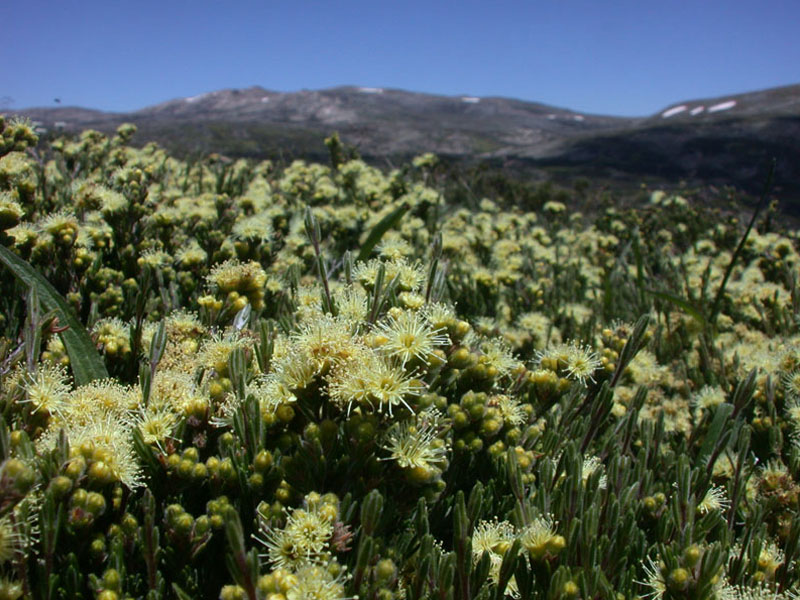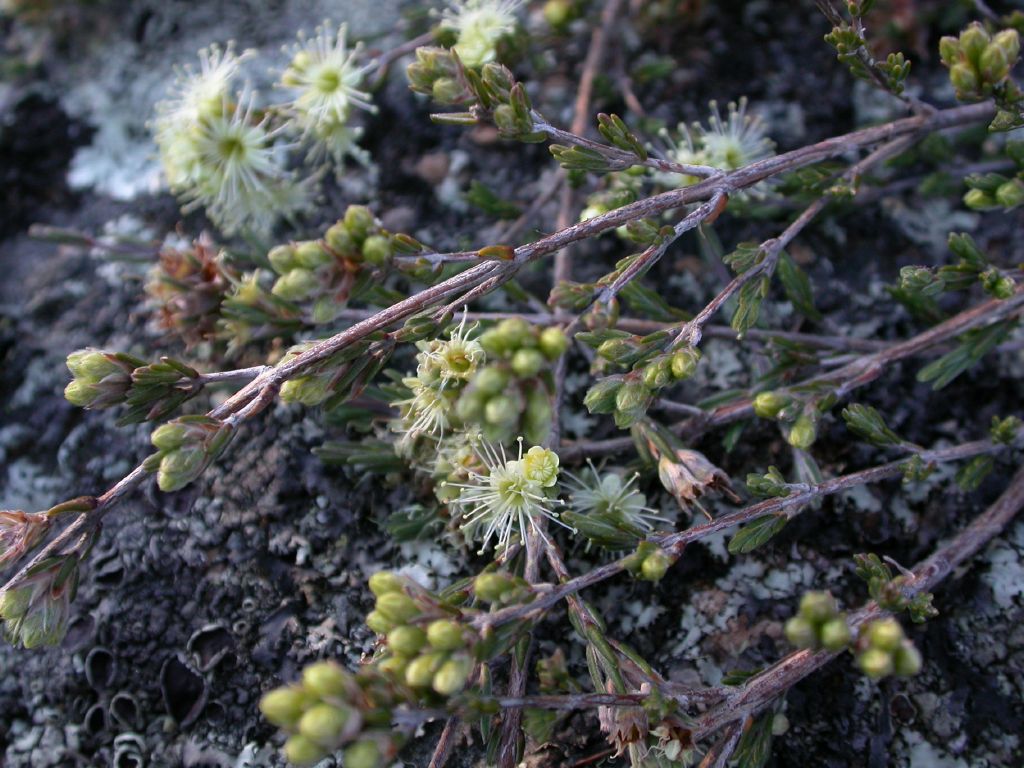Fruits/Seeds
The fruits are bell shaped pods which appear to burst at their opening and droop from branches, 3.5 - 4 mm long and 3 mm in diameter.
Field Guide
Improve your identification skills. Download your Yellow Kunzea field guide here!
Erect or spreading shrub that grows up to 1 m high. Young stems of the plant are covered in small hairs.
Branches are crowded with leaves and are arranged in more or less opposite, linear pair. Leaves are small and cylindrical in shape 3 - 8 mm long and 0.5 mm wide. Leaves are green in colour and are covered in small white hairs.
Arranged in groups of mostly 2 or 3 near the ends of the branches. The floral cup is hairy and 3 – 4 mm long. Petals are pale yellow, more or less round and about 1.5 mm long. There are 24 - 35 stamens (pollen-bearing organs) that protrude from the flower 3.5 – 4.5 mm long.
The fruits are bell shaped pods which appear to burst at their opening and droop from branches, 3.5 - 4 mm long and 3 mm in diameter.
Improve your identification skills. Download your Yellow Kunzea field guide here!

First fully open single flower
Full flowering (record all days)
End of flowering (when 95% of the flowers have faded)
Open seed pods containing seeds (record all days)
Climate change will directly affect the ecological communities in which this alpine species resides. An increase in temperature and extreme heat events will reduce viable habitat for this species.


K.dactylota is superficially similar, but can be distinguished when in flower by its pink/purple inflorescences.